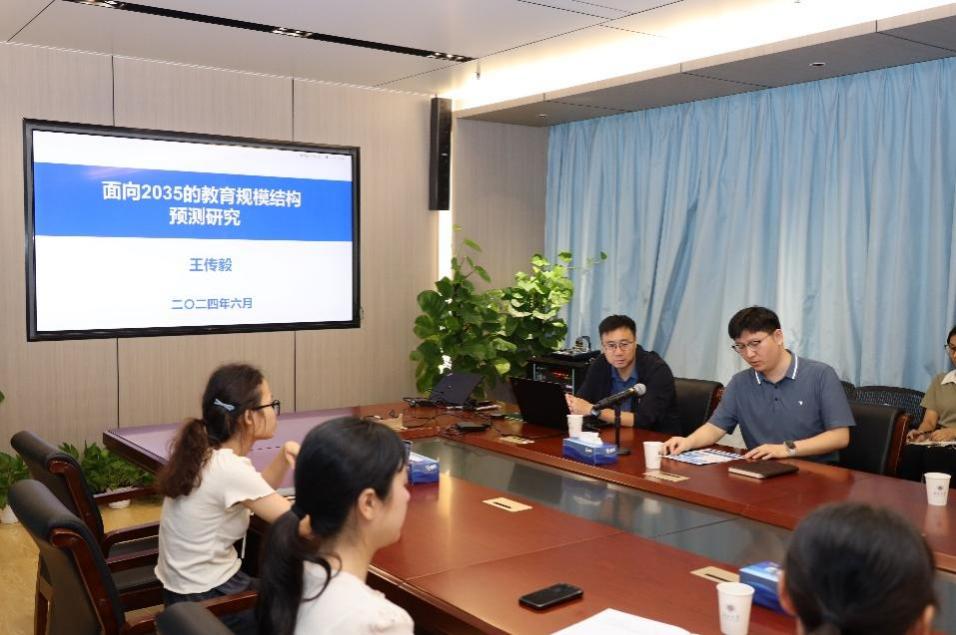On the morning of June 18, 2024, the Faculty of Education held a renowned scholar lecture series at Huide Building. Associate Professor Wang Chuanyi from Tsinghua University delivered a lecture titled “Research on Educational Scale and Structure Forecasting Towards 2035”. The lecture was hosted by Vice Dean Li Penghu, with relevant faculty and students from the Faculty of Education attending.
First, Wang Chuanyi compared three traditional models of educational planning and four forecasting methods. He pointed out that both the technocratic political models, which are inclined towards educational scale and structure forecasting, and the prediction methods based on specific conditions have certain limitations in practical applications, especially in accurately reflecting the potential impact of population scale changes on various educational stages.

He then discussed the trends in China’s educational scale and structure changes towards 2035, and the potential impacts of these changes on resource allocation. He proposed a technical roadmap for these predictions. By introducing a compensatory fertility function to measure the “three-child” effect and utilizing an autoregressive integrated moving average (ARIMA) model, he predicted the impact of population changes on different educational stages. Notably, Wang Chuanyi forecasted that higher education may shift from the current “pyramid shape” to a “Five-Finger Mountain” model in the future, resulting in differentiation in the functions and types of universities.
Based on these predictions, Wang Chuanyi suggested that the government should optimize educational resource allocation in line with the trends of educational scale changes at all levels. He also recommended adjustments to the university faculty structure to promote the intrinsic development of education. Furthermore, Wang Chuanyi discussed the reasons for the insufficient supply of high-quality higher education resources. Leading universities, in order to maintain a good social reputation and increase research output, are expanding graduate enrollment, particularly in doctoral programs, while controlling undergraduate enrollment and raising the minimum admission threshold.

The lecture by Professor Wang Chuanyi received a warm response from the faculty and students in attendance. During the interactive discussion session, he exchanged views with the audience on topics such as the integration of university resources, the distinction between newly established universities, and how preschool education in Shenzhen should respond to population scale changes. Li Penghu summarized the lecture, stating that Professor Wang Chuanyi’s report broke our subjective judgment and explored the trends of changes in various educational stages from the perspective of population scale forecasting. This has strong guiding significance for the future development of education and for the future research of faculty and students.
Written by: Huang Chunni